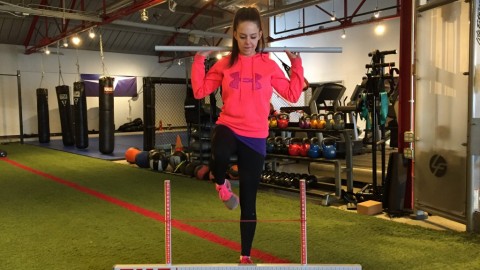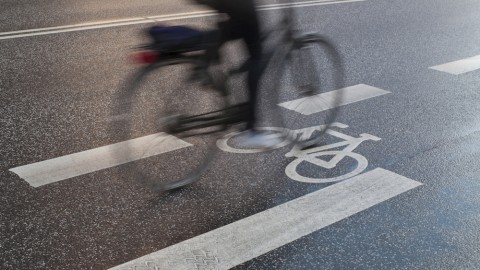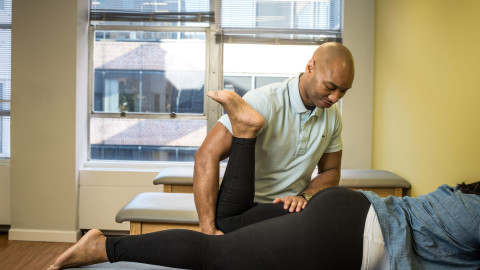Being injured or in pain is no fun. We’ve heard many patients tell us they held off going to physical therapy because it seemed like a daunting task and hoped the injury would heal on its own. Physical therapists can help you better understand what’s causing your pain—spoiler alert: what’s causing your pain usually isn’t where you feel the pain—and create a custom treatment plan to get you feeling better than ever.
Your First Visit
Your initial visit will be an evaluation with your physical therapist who will assess your injury and create a personalized treatment plan that aims to not only reduce pain and improve functionality of the injury but also correct any damaging movement patterns or muscular imbalances that may have caused the injury. Your unique treatment plan will usually combine passive techniques such as manual therapy along with exercise programs.
Physical Therapy Treatment Methods Used
The treatment methods used will largely depend on your condition. During each visit, your physical therapist will explain each method used and how they will help you restore movement. Below are common treatment methods used in a patient’s recovery plan:
- Manual Therapy: Manual therapy is the foundation of treatments at Therapydia. It involves the physical therapist kneading and manipulating soft tissues with their hands to alleviate pain and restore mobility. It can also include joint mobilizations and manipulation which loosen tight tissue around a joint and improve flexibility, mobility and pain. Read more about Manual Therapy.
- Ultrasound: Ultrasounds aren’t just for imaging, they are also used in physical therapy. The sound waves the device emits (which are not detectable to our ears) safely generate heat deep in the body, which loosens tissues and relieves pain. Ultrasounds are especially good for ligament injuries and relieving acute pain.
- Laser: The lasers used for physical therapy are extremely low level and so don’t cause pain—or any feeling at all. The light that the lasers emit helps to stimulate healing and to reduce inflammation and pain.
- Electrical Stimulation: Electric stimulation or ESTIM is a minor but constant electric stimulus used to contract muscles that might otherwise stay still, which helps to restores effective movement and function
- Dry Needling: Dry needling is a method of releasing toxic chemicals that form trigger points in your muscle as a result of trauma. They can cause pain, dysfunctional movement, headaches, and joint movement problems. Dry needling uses a very thin needle to induce a “twitch response” and release the chemicals, relax and muscle, and restore blood flow. Dry needling is only available in certain states such as Colorado or Lousiana that allow physical therapists to practice dry needling. Read more about Dry Needling.
- Heat: Heat is used to decrease pain and improve mobility in soft tissues. This makes them more pliable which can be beneficial for manual therapy.
- Ice: Ice relieves inflammation—which reduces pain and makes physical therapy easier. It also can improve the mobility of joints
- Exercise: Exercise is another important aspect of treatment. Physical therapists prescribe a specific exercise program for the patient to perform at home designed to strengthen certain muscles, improve range of motion and strength, and treat muscular imbalances that could have caused the injury. Patients will have exercises to practice at home in between physical therapy treatments to improve strength and range of motion. Home exercises programs should be updated to make your healing progress.
In addition to utilizing the physical therapy treatment methods above, your physical therapist may incorporate movement-based techniques such as pilates and TRX in your treatment plan.
Your Last Visit
During your last visit, your physical therapist may utilize the techniques above depending on the stage of your recovery or your recovery goals. You will be given a final home exercise program to help you continue your recovery after your physical therapy treatments are over.
Additionally, at Therapydia, we offer on-going wellness programs such as yoga and boot camp classes to keep you on the path to full recovery and beyond. These classes are taught by physical therapists who understand your unique injury and recovery plan and can help customize these wellness classes for your needs.









